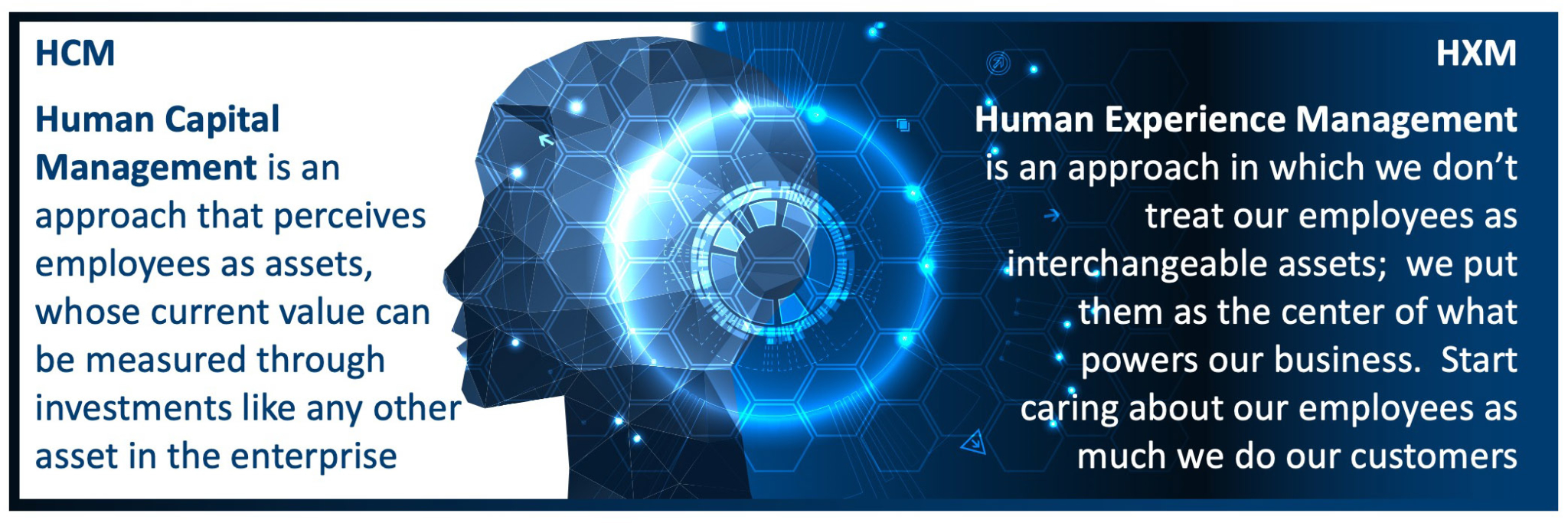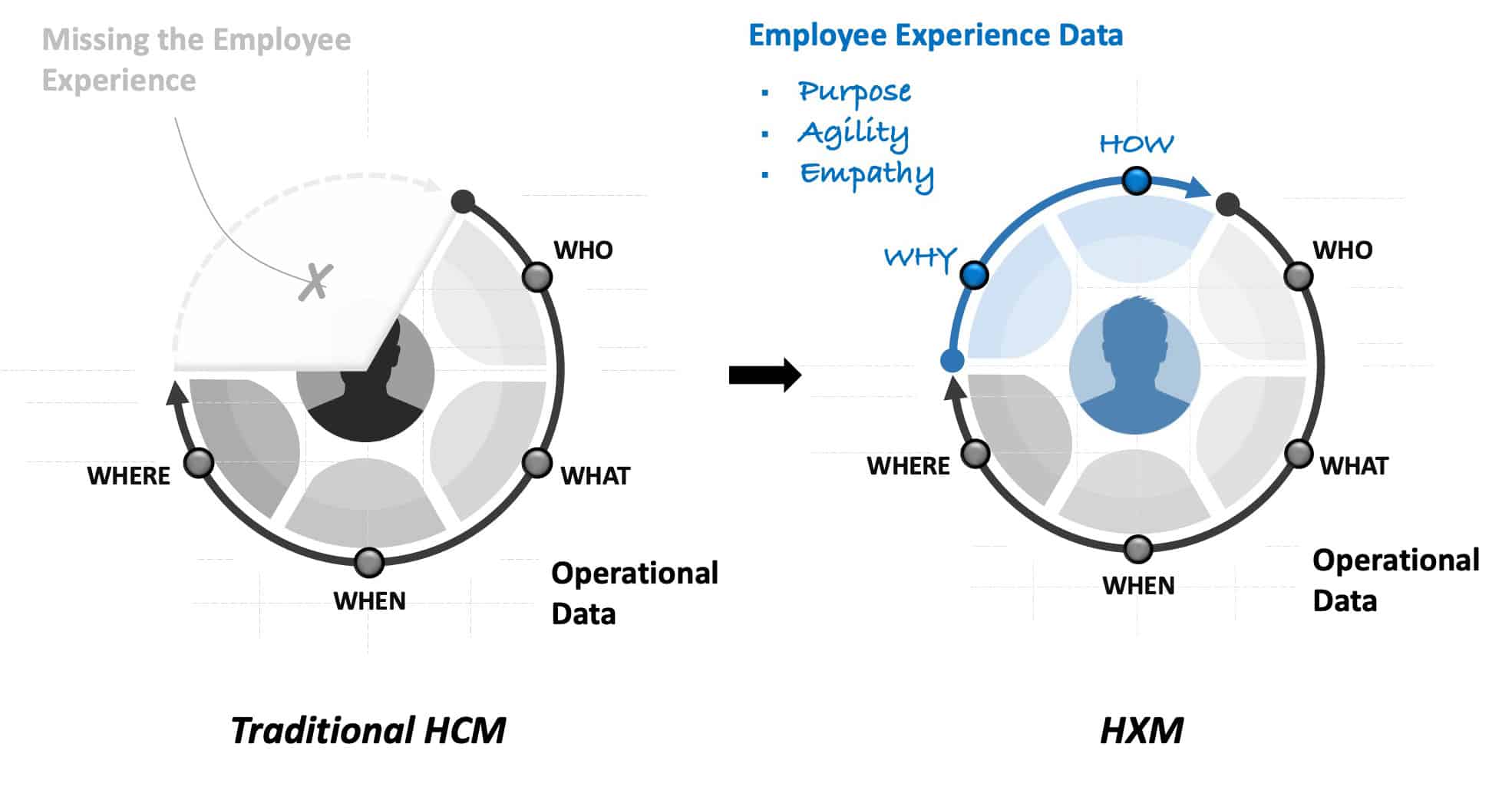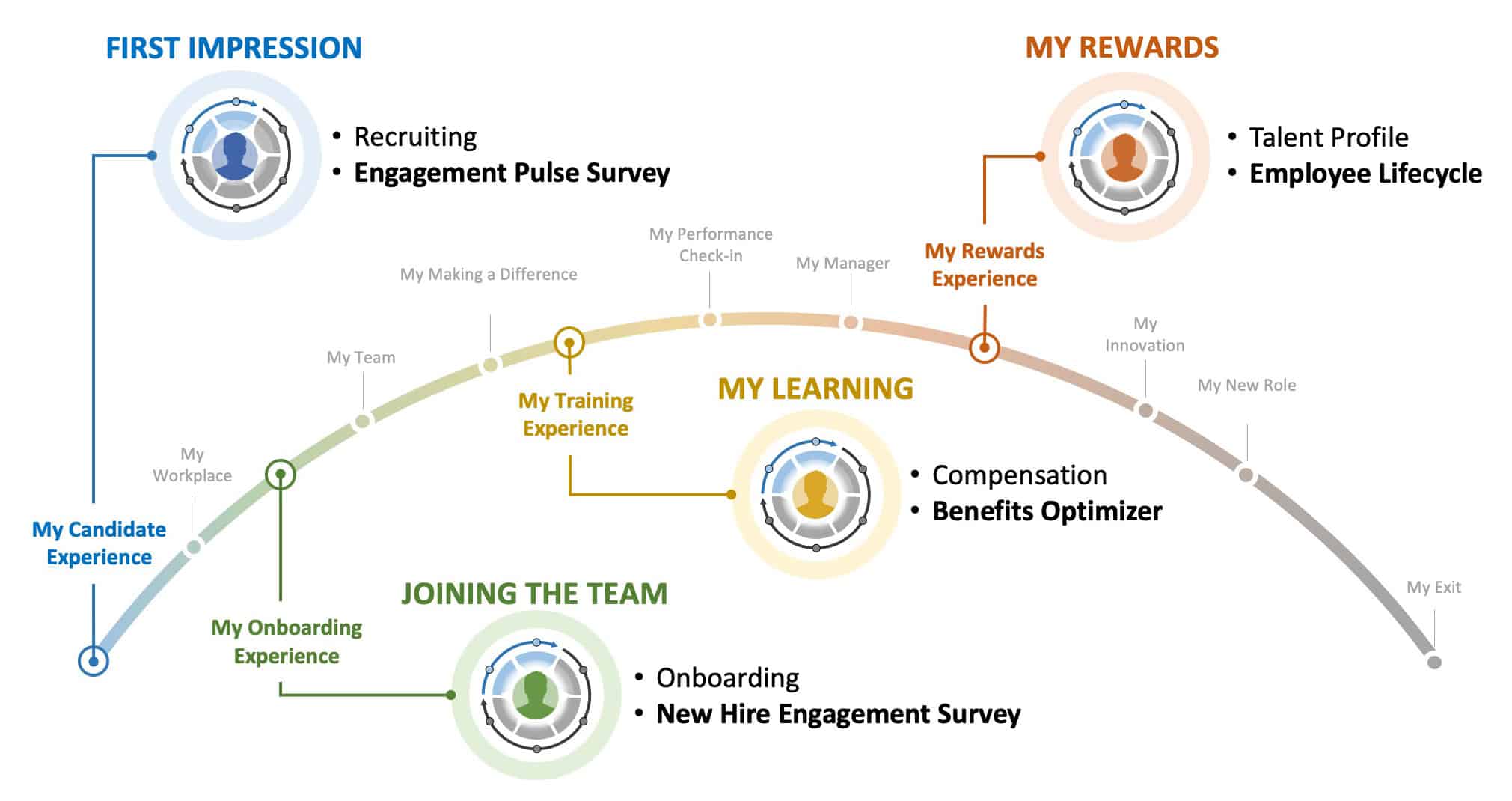How a Shift in Focus to Employee Experiences Will Empower the Future Workforce
Company leaders have become increasingly more proactive when it comes to developing the right culture to engage, motivate, and inspire their workforce. That’s because the numbers show that when we invest in our people and put employees at the center of business, everyone succeeds. And this is no different for the U.S. Intelligence Community.
For instance, the U.S. government is under constant pressure to hire, develop, and retain a cleared and skilled workforce in a rapidly moving, always-on world. Fortunately, SAP NS2 offers a human-centric strategy, known as Success Factors Human Experience Management (HXM), that’s been shown to build and retain the right employees in order to deliver on mission-critical work.

Human Capital Management: Missing the Employee Experience
“How do we attract the right people?” “Who are the right people?” “How do we keep the right people from leaving?” The questions most leaders find themselves asking are tricky for a number of reasons. First, the insight required to fully understand workforce alignment is scattered across multiple systems.
“People are your most important asset.” Given the heightened battle for talent and the changing dynamics of a more diverse workforce, these words could not be truer.
Many organizations suffer from having “one of everything”—one solution for recruiting, one for onboarding, one for training, and so on. This approach severely limits enterprise-wide decision making. Second, even after the data is brought together, visibility into why problems are happening or how to fix them aren’t always obvious.
With respect to today’s Human Capital Management (HCM), no solution has tracked the bottom-up, hire-to-retire experiences from the perspective of the employee. This means none of the current options track the key factors that ultimately influence an employee’s decision to submit a resume, accept an offer, stay engaged, or leave an organization.
The current state relies solely on operational data and leaves us in a state of knowing what is going on, but not exactly why. And without real employee experience data, it’s difficult for an organization to even begin to fix recruiting or retention issues. In fact, the operational “What” data alone typically has organizations chasing the wrong problems, at great loss and great cost.
The Unique Challenges Facing the U.S. Intelligence Community
While the U.S. Intelligence Community (IC) remains focused on confronting conventional challenges to national security, advances in technology are calling for urgent waves of change across multiple fronts.
The IC finds itself pressured to be more agile, innovative, and resilient in its response to various threats.
The interconnected nature of these threats underscores the importance of the IC to recruit, develop and retain a diverse pool of the best and the brightest in the world.
Compounding these issues are recruiting challenges unique to the IC:
- Highly competitive talent market
- Complex systems slow down the application process
- A lengthy suitability assessment process
- Hiring challenges given the clearance process
The need to improve an employee’s overall experience in the workplace may not be new for an established organization. But people’s expectations are evolving, and the stakes are especially high for the IC.
The Evolution from HCM to HXM
SAP SuccessFactors Human Experience Management (HXM) introduces a new approach to HR solutions that builds on the best of HCM — and extends it to create truly dynamic, engaging, and employee-centered experiences.
When leaders are able to gather “Why” and “How” data, organizations can get a full picture of the issues at hand, be empathetic, and take action.

If employees are our most important asset, and the care of our employees is critical, we need to do more and listen to their feedback, their intentions, opinions, and emotions.
This is much more than an annual pulse or exit survey—it’s a continuous, human-centric feedback loop across their entire employment journey. This is how we answer the complex questions on how to keep and grow talent, but also how to attract more of the right people.

In order to close the employee experience gap, it’s up to leaders to find out what’s actually happening within their organization. Given today’s tight candidate market, employee retention is essential to both day-to-day successes, but also long-term innovation growth.
To learn more about how SAP Success Factors HXM optimizes employee experiences in ways that accelerate business growth, download our free report today.









